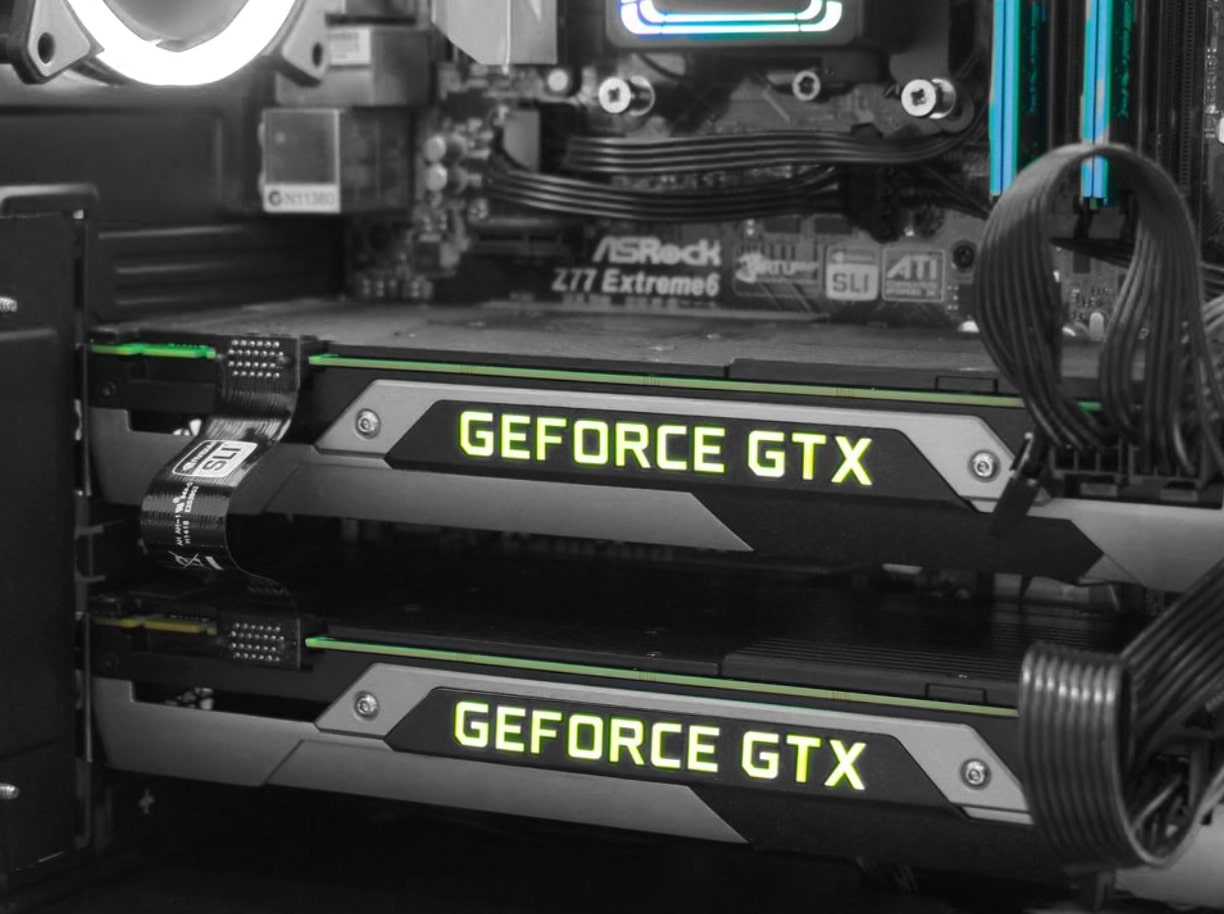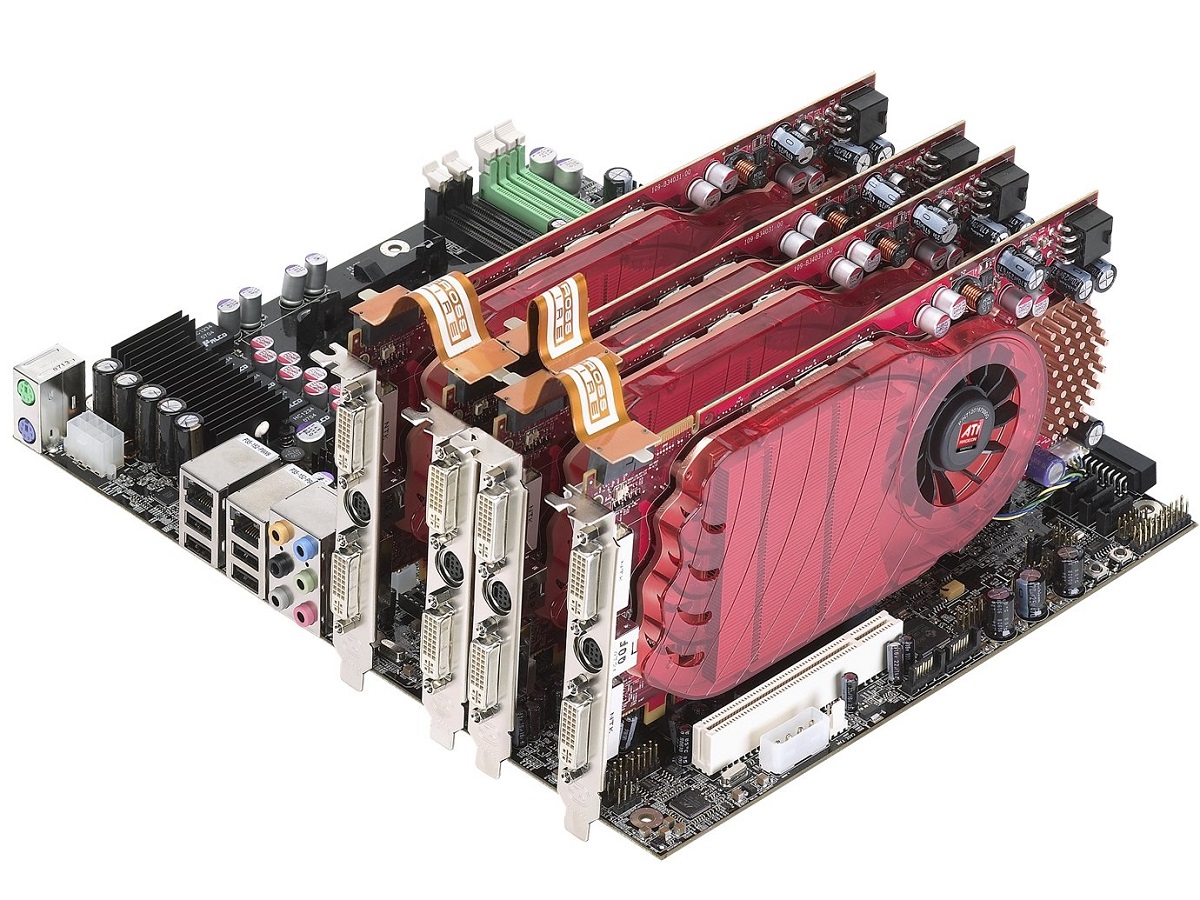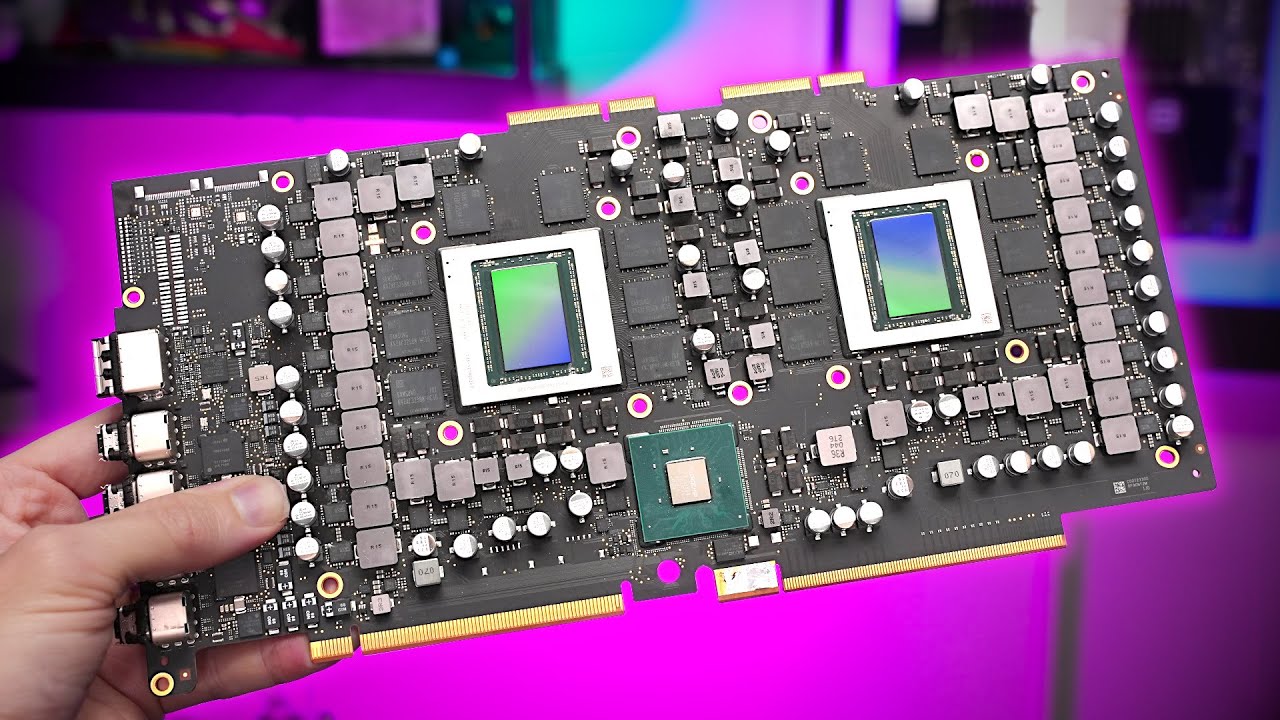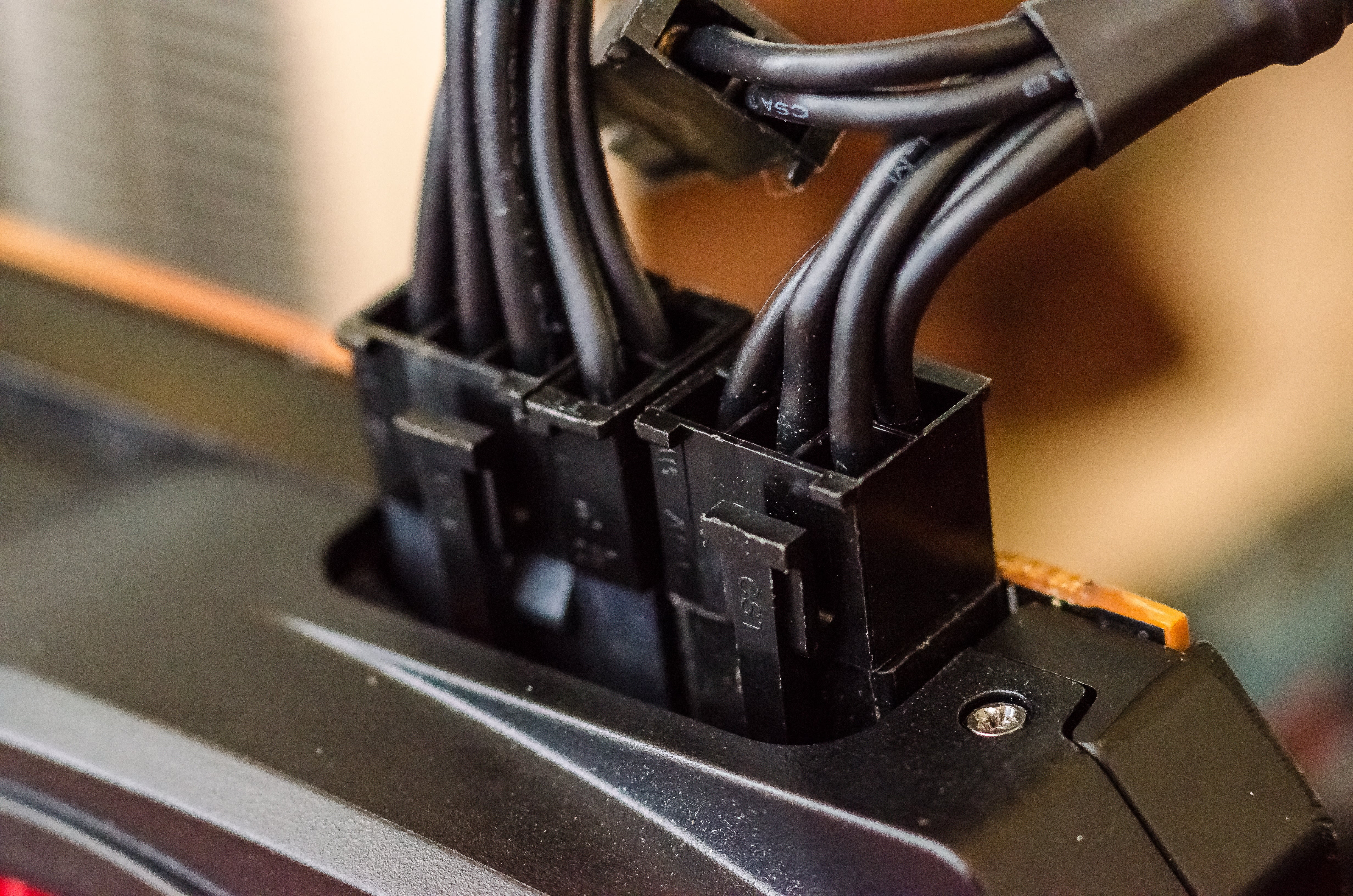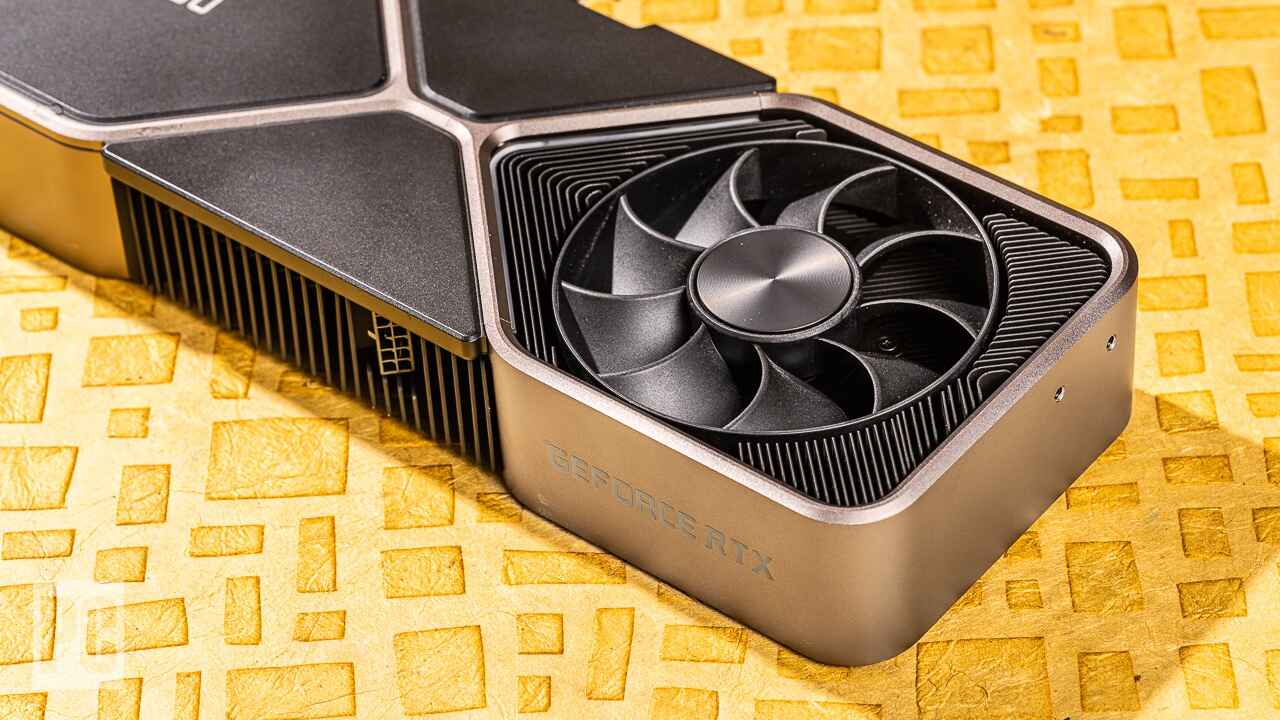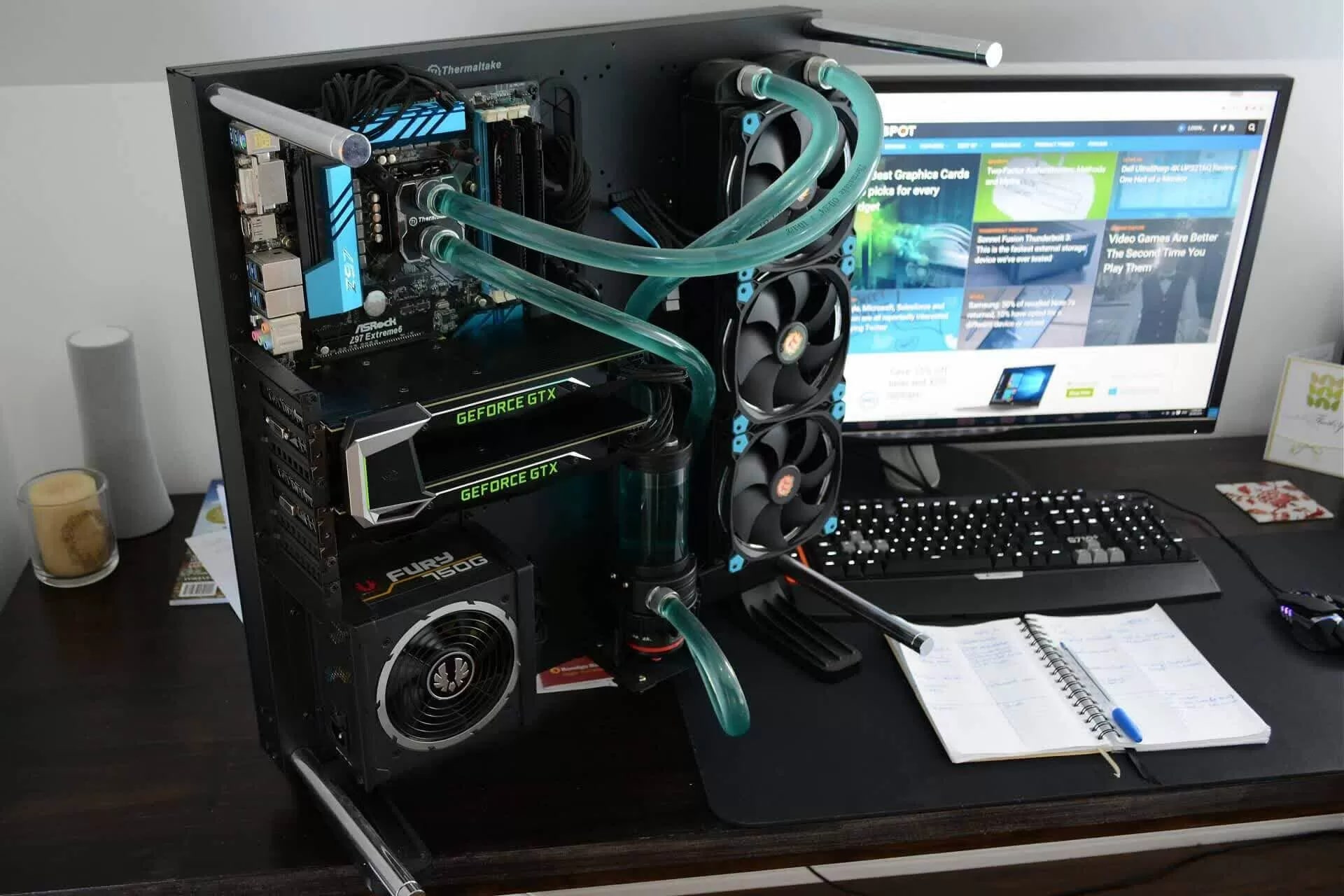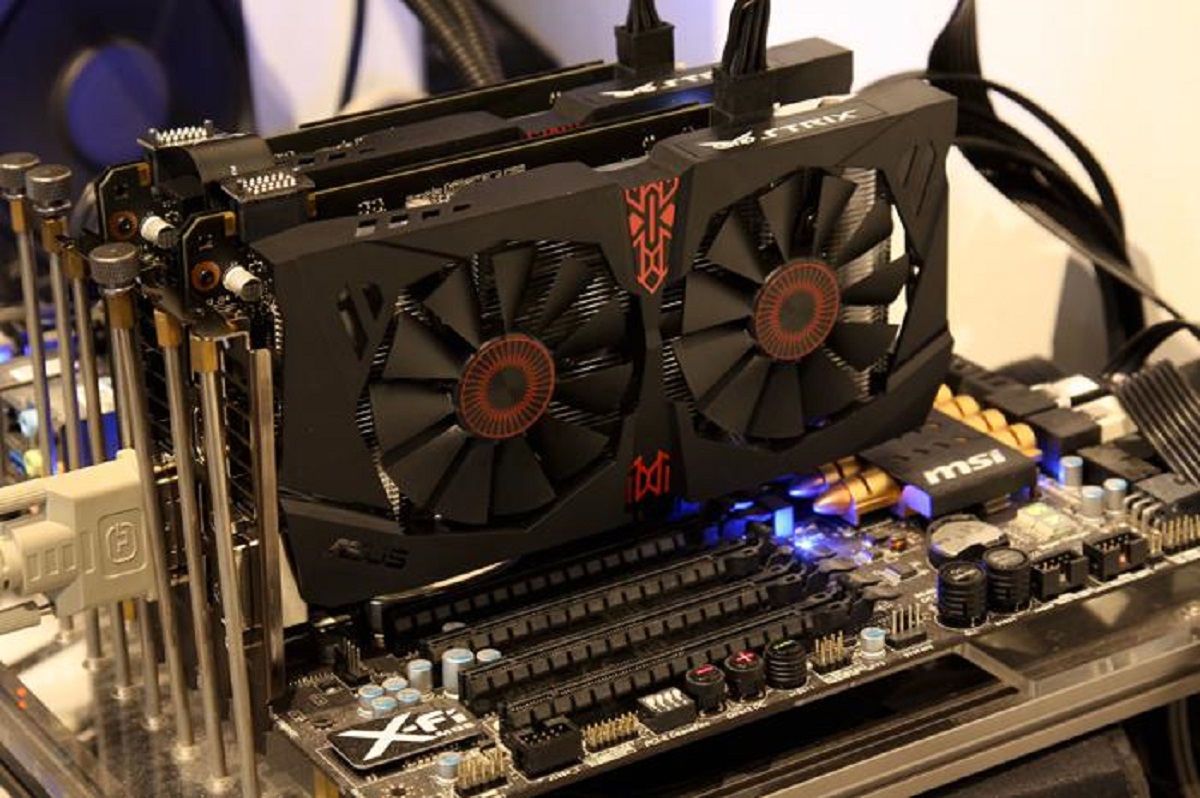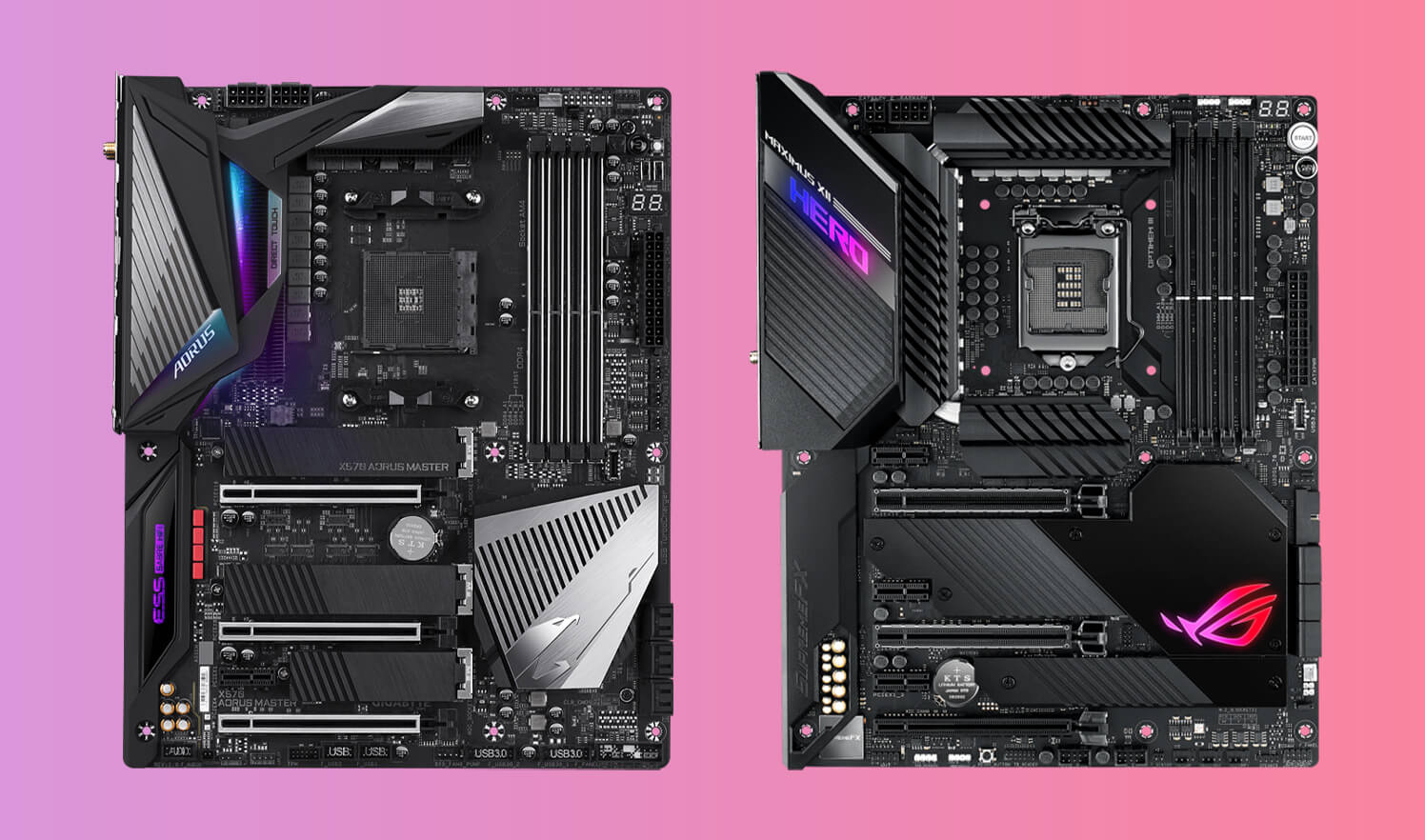Introduction
Welcome to the world of high-performance gaming graphics cards! If you’re a gamer, chances are you’ve come across the term SLI. SLI, or Scalable Link Interface, is a technology that allows you to connect multiple graphics cards together to boost the overall performance and graphical firepower of your gaming rig.
Whether you’re a casual gamer or a hardcore enthusiast, having a PC that can handle the latest and most demanding games is crucial. A single graphics card can provide impressive visuals and smooth gameplay, but for those who want to take their gaming experience to the next level, SLI offers an enticing solution.
With SLI, you can harness the power of two or more graphics cards working in parallel, effectively doubling or even tripling the rendering capabilities of your system. This technology is particularly popular among gamers who crave the highest frame rates, stunning graphics, and immersive experiences.
In this article, we’ll delve into the world of SLI, exploring how it works, its benefits, requirements, and some of its drawbacks. Additionally, we’ll touch on a few alternative options for those who may not want to invest in SLI.
So, hold on tight as we venture into the realm of SLI and discover how this technology can elevate your gaming experience to new heights!
What is SLI?
SLI, which stands for Scalable Link Interface, is a technology developed by NVIDIA that allows you to connect two or more graphics cards in your gaming rig to work together. This cooperation between multiple GPUs (Graphics Processing Units) enables them to share the workload and render graphics more efficiently, resulting in improved performance and a better gaming experience.
SLI works by dividing the rendering workload between the connected graphics cards. Each card is responsible for rendering a specific portion of the image or scene, allowing for faster and smoother frame rates. This parallel processing power provided by SLI can significantly enhance the graphics-intensive tasks carried out by your system, such as rendering realistic 3D models, displaying high-resolution textures, and implementing complex visual effects.
To take advantage of SLI, you will need a compatible motherboard that supports multiple PCIe (Peripheral Component Interconnect Express) slots, as well as NVIDIA graphics cards with SLI support. It’s important to note that SLI is exclusive to NVIDIA graphics cards. AMD has a similar technology called CrossFire, but it operates differently and is not compatible with SLI.
SLI comes in different configurations, such as 2-way, 3-way, and even 4-way SLI, depending on the number of graphics cards you connect. Each configuration offers increased performance, as more graphics cards can contribute their processing power. However, it’s essential to ensure that your power supply unit (PSU) can handle the increased power consumption and that your CPU and RAM can keep up with the demands placed on them.
SLI is not limited to gaming alone. It can also benefit professionals who work with graphic-intensive applications like video editing, 3D modeling, and animation. These tasks often require a significant amount of GPU power, and SLI can provide the necessary boost to render complex scenes and process large datasets more efficiently.
Now that we have a solid understanding of what SLI is and how it functions, let’s explore some of the benefits it offers to gamers and power users alike.
How does SLI work?
SLI works by using a combination of physical and software mechanisms to enable multiple graphics cards to work together seamlessly. The key components involved in making SLI function are the SLI bridge, the GPU driver, and the SLI technology itself.
To connect multiple graphics cards, you’ll need an SLI bridge. This bridge physically connects the SLI-compatible PCIe slots on your motherboard, allowing for communication and data transfer between the graphics cards. The SLI bridge is available in various configurations, such as flexible, rigid, and LED-lit options, catering to different motherboard layouts and aesthetic preferences.
Once the SLI bridge is properly installed, the next step involves installing the NVIDIA GPU driver on your system. The NVIDIA driver recognizes the connected graphics cards and enables SLI functionality. It ensures that the workload is divided between the cards effectively, maximizing their combined processing power.
SLI utilizes a technology called alternate frame rendering (AFR) to distribute the rendering workload between the connected graphics cards. AFR works by dividing each frame of the game or application into multiple parts, assigning a specific part of each frame to each graphics card. The cards work in parallel, rendering their allotted portion of each frame simultaneously. The completed frames are then combined to produce the final output, resulting in a smooth and seamless visual experience.
It’s important to note that not all games or applications are optimized for SLI. NVIDIA collaborates with game developers to provide SLI profiles, which are specific optimizations for individual games. These profiles ensure that the game is compatible with SLI and that the workload is distributed efficiently across multiple graphics cards. Without proper SLI support, the additional graphics cards may not contribute to improved performance.
Modern SLI technology also features enhancements such as SLI antialiasing (SLI AA) and SLI multi-monitor support. SLI AA improves the graphics quality by applying antialiasing to each graphics card’s assigned areas, resulting in smoother edges and reduced jaggedness. SLI multi-monitor support allows you to connect multiple monitors and extend your desktop across them, providing an immersive and expansive viewing experience.
Now that we understand how SLI works, let’s explore the benefits it offers to gamers.
Benefits of SLI
SLI offers a range of benefits that can greatly enhance your gaming experience. Let’s take a closer look at some of the key advantages of utilizing SLI technology:
- Increased Performance: The primary benefit of SLI is the significant boost in performance. By combining the processing power of multiple graphics cards, SLI can handle demanding games and applications with ease, resulting in higher frame rates, smoother gameplay, and improved overall performance.
- Enhanced Visuals: SLI enhances the visual quality of your gaming experience. It enables you to crank up the settings to the maximum, allowing for more detailed textures, increased resolutions, and advanced graphical effects. With SLI, you can unlock the true potential of your games and enjoy stunning visuals like never before.
- Future-Proofing: SLI provides a level of future-proofing to your gaming rig. As technology advances, new and more demanding games are released. Having SLI capability ensures that your system can handle the upcoming titles without compromising on performance. SLI allows you to stay ahead of the curve and enjoy the latest games at their fullest potential.
- Flexible Configurations: SLI offers different configuration options, allowing you to tailor your setup to your specific needs and budget. Whether you choose a 2-way SLI for an optimized balance between performance and cost or opt for a higher configuration like 3-way or 4-way SLI for ultimate performance, SLI provides flexibility to suit your preferences.
- Professional Applications: SLI isn’t just for gaming. It can also benefit professionals who work with graphic-intensive applications. Tasks like video editing, 3D rendering, and simulation require substantial GPU power. By utilizing SLI, professionals can achieve faster rendering times and smoother workflows, ultimately improving productivity.
These are just a few of the many benefits that SLI brings to the table. However, it’s essential to consider the requirements and potential drawbacks of SLI before diving into this technology. Let’s explore the prerequisites for setting up SLI in the next section.
Requirements for SLI
To set up SLI and take advantage of its benefits, there are several requirements that need to be met. Here are the key prerequisites for implementing SLI:
- SLI-Compatible Motherboard: The first requirement is a motherboard with SLI support. Not all motherboards are equipped with multiple PCIe slots or support SLI technology. Make sure your motherboard explicitly states SLI compatibility to ensure proper functionality.
- SLI-Compatible Graphics Cards: SLI requires NVIDIA graphics cards with SLI support. Check the specifications of your graphics card to confirm its compatibility with SLI. It’s important to note that SLI is not compatible with AMD graphics cards. For AMD users, the equivalent technology is called CrossFire.
- SLI Bridge: An SLI bridge is necessary to physically connect the SLI-compatible PCIe slots on your motherboard. The bridge allows the graphics cards to communicate and transfer data effectively. Different configurations of SLI bridges are available, so choose one that suits your motherboard layout and aesthetic preferences.
- Power Supply Unit (PSU): SLI configurations can consume a significant amount of power. Ensure that your PSU has sufficient wattage to support the additional graphics cards. A PSU with multiple PCIe power connectors is also necessary to power the graphics cards effectively.
- CPU and RAM Compatibility: SLI can put additional strain on your CPU and RAM. Make sure your CPU is powerful enough to handle the increased processing demands. Additionally, check that your RAM capacity and speed are sufficient for the SLI configuration you plan to implement, as more graphics cards may require more system memory.
- Proper Ventilation and Cooling: SLI configurations can generate more heat than a single graphics card setup. Ensure that your PC case has adequate ventilation, and consider installing additional cooling solutions such as fans or liquid cooling to keep the temperatures in check.
Meeting these requirements will ensure a smooth and successful implementation of SLI in your gaming rig. However, it’s important to consider the potential downsides of SLI before making a final decision. Let’s explore the disadvantages of SLI in the next section.
Disadvantages of SLI
While SLI offers impressive performance enhancements, it’s important to weigh the potential downsides before deciding to implement this technology. Here are some of the disadvantages of SLI:
- Increased Cost: Implementing SLI requires purchasing multiple graphics cards and an SLI bridge, which can significantly increase the overall cost of your gaming rig. Additionally, the power requirements of SLI configurations may necessitate investing in a higher wattage power supply, adding to the financial investment.
- Compatibility and Optimization: Not all games or applications are optimized for SLI. In some cases, enabling SLI may not result in a noticeable performance improvement, or worse, it may introduce compatibility issues or graphical glitches. It’s essential to check if your favorite games have good SLI support and if the additional cost justifies the performance gains.
- Heat and Power Consumption: SLI configurations generate more heat and consume more power compared to a single graphics card setup. This requires proper ventilation and cooling to prevent overheating issues. The increased power consumption can also lead to higher electricity bills, especially if you frequently engage in graphics-intensive activities.
- Limited Application Support: SLI is primarily designed for gaming, and its benefits may not extend to all applications. If you primarily use your system for tasks that do not heavily rely on GPU power, the advantages of SLI may not be fully utilized. Alternatively, some applications may not support SLI at all, rendering the additional graphics cards unnecessary for those specific tasks.
- Noisy Operation: Since SLI configurations tend to generate more heat, the cooling fans on the graphics cards may need to operate at higher speeds, resulting in increased noise levels. If you value a quiet gaming environment, the fan noise can be a significant drawback of SLI configurations.
Considering these disadvantages will help you make an informed decision about whether SLI is the right choice for your gaming needs. If the potential drawbacks outweigh the benefits, there are alternative options available that can still enhance your gaming performance.
Alternatives to SLI
If SLI does not seem like the right fit for your gaming needs or if you want to explore other options, there are alternatives available that can still provide a significant performance boost. Here are a few alternatives to SLI:
- Single High-End Graphics Card: Instead of investing in multiple graphics cards for an SLI configuration, you can opt for a single high-end graphics card. High-end GPUs offer exceptional performance on their own and can handle demanding games and applications without the need for SLI. This approach may be more cost-effective and avoids potential compatibility issues or the need for additional cooling and power consumption associated with SLI setups.
- Upgrade GPU Regularly: Rather than relying on SLI, you can choose to upgrade your graphics card regularly. Graphics technology advances rapidly, and a new generation of graphics cards is consistently released. Upgrading to the latest GPU ensures you benefit from the latest features and performance improvements without the complexity and limitations of SLI.
- External Graphics Dock: External graphics docks are an alternative solution that allows you to connect a desktop-class graphics card to a laptop or a system not designed for SLI. These docks typically connect to the system via Thunderbolt or USB-C and provide a boost in graphics performance for gaming or other GPU-intensive tasks. This option offers flexibility and the ability to upgrade the graphics card independently of your system.
- Cloud Gaming: Cloud gaming is gaining popularity as it eliminates the need for powerful hardware on your end. Services like Google Stadia, GeForce Now, and PlayStation Now allow you to stream games from remote servers, taking advantage of their high-performance GPUs. This option requires a stable internet connection and a subscription to the gaming service, but it grants access to a vast library of games without the need for SLI or high-end hardware.
These alternatives provide different approaches to achieving optimal gaming performance without relying on SLI. It’s important to consider your specific requirements, budget, and preferences before deciding on the best option for you.
Conclusion
SLI, or Scalable Link Interface, is a technology that allows you to connect multiple graphics cards to boost your gaming rig’s performance. By harnessing the power of multiple GPUs, SLI offers increased frame rates, enhanced visual quality, and improved overall gaming experience. However, before diving into SLI, it’s important to consider the requirements and potential drawbacks.
To set up SLI, you need a compatible motherboard, SLI-supported graphics cards, an SLI bridge, and a powerful PSU. While SLI can provide significant performance gains, it comes with a higher cost, increased power consumption, potential compatibility issues, and additional complexity. It’s crucial to ensure that your favorite games and applications have good SLI support to maximize the benefits.
If you decide that SLI is not the right fit for you, there are alternatives available. Upgrading to a single high-end graphics card, regularly upgrading your GPU, utilizing external graphics docks, or exploring cloud gaming services are viable options to achieve optimal gaming performance without relying on SLI.
Ultimately, the decision to implement SLI or choose an alternative solution depends on your specific needs, preferences, and budget. By weighing the benefits and drawbacks, you can make an informed choice to create a gaming setup that suits your requirements and elevates your gaming experience to new heights.







